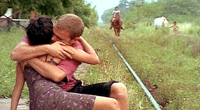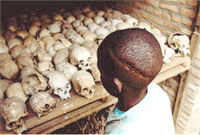Una de dos is set against the rural backdrop of Argentina in 2002 as a protracted recession and a government-instituted, desperate measure austerity plan to rescue the national economy from insolvency through the devaluation of its currency and announced default on its foreign debt has led to widespread rioting and worker strikes in the cities […]
Tag: Human Rights Watch
No More Tears Sister: Anatomy of Hope and Betrayal, 2004
On an unassuming afternoon in September 1989, Dr. Rajani Thiranagama, a 35 year-old physician, medical university professor, and human rights activist, was riding home on her bicycle after having finished grading the final examinations from her Anatomy class when she was gunned down on an anonymous street in her native city of Jaffna by unknown […]
Project Kashmir, 2008
The specter of the Partition of Bengal in 1947 continues to haunt the modern day consciousness of a divided Kashmir in Senain Kheshgi and Geeta Patel’s provocative and acutely observed Project Kashmir. Propelled by the idea of capturing the Kashmir conflict from a Hindu and Muslim perspective, Southeast Asian-American friends Kheshgi and Patel attempt to […]
Total Denial, 2006
A fascinating chronicle of the landmark tort case brought against Unocal on behalf of fifteen displaced Burmese villagers who were raped, beaten, enslaved, tortured, and even killed by the Burmese army in service to Unocal for the construction and security of the Yadana pipeline linking southern Burma to Thailand, Total Denial is a dense, intimate, […]
Keepers of Memory, 2004
A Tutsi herdsman and genocide survivor sits atop a pastoral outpost on the side of a hill in Bisesero, reflects on the loss of his family and friends during the 100 day massacre, wistfully looks out into the horizon, and comments, “This place used to be beautiful. Now the only beauty is the skeletons on […]
Sari’s Mother, 2006
As in Eva Mulvad and Anja Al-Erhayem’s Enemies of Happiness, James Longley’s Sari’s Mother, the edited “fourth fragment” from Iraq in Fragments, is a sobering portrait of the pervasive confusion and uncertainty that continues to define everyday life under postwar occupation, and its unseen toll on the weakest and most vulnerable. In this segment, Longley […]





